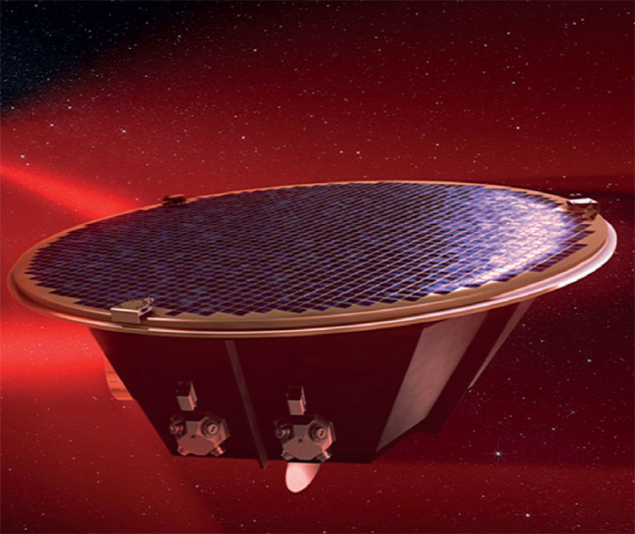
Image credit: ESA.
On 20 June the European Space Agency (ESA) gave the official go-ahead for the Laser Interferometer Space Antenna (LISA), which will comprise a trio of satellites to detect gravitational waves in space. LISA is the third mission in ESA’s Cosmic Vision plan, set to last for the next two decades, and has been given a launch date of 2034.
Predicted a century ago by general relativity, gravitational waves are vibrations of space–time that were first detected by the ground-based Laser Interferometer Gravitational-Wave Observatory (LIGO) in September 2015. While upgrades to LIGO and other ground-based observatories are planned, LISA will access a much lower-frequency region of the gravitational-wave universe. Three craft, separated by 2.5M km in a triangular formation, will follow Earth in its orbit around the Sun, waiting to be distorted by a fractional amount by a passing gravitational wave.
Although highly challenging experimentally, a LISA test mission called Pathfinder has recently demonstrated key technologies needed to detect gravitational waves from space (CERN Courier January/February 2017 p34). These include free-falling test masses linked by lasers and isolated from all external and internal forces except gravity. LISA Pathfinder concluded its pioneering mission at the end of June, as LISA enters a more detailed phase of study. Following ESA’s selection, the design and costing of the LISA mission can be completed. The project will then be proposed for “adoption” before construction begins.
Following the first and second detections of gravitational waves by LIGO in September and December 2015, on 1 June the collaboration announced the detection of a third event (Phys. Rev. Lett. 118 221101). Like the previous two, it is thought that “GW170104” – the signal for which arrived on Earth on 4 January – was produced when two black holes merged into a larger one billions of years ago.








